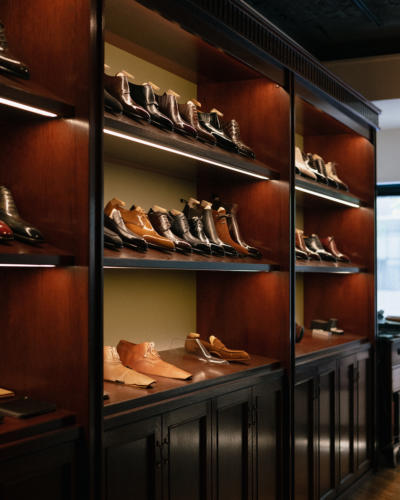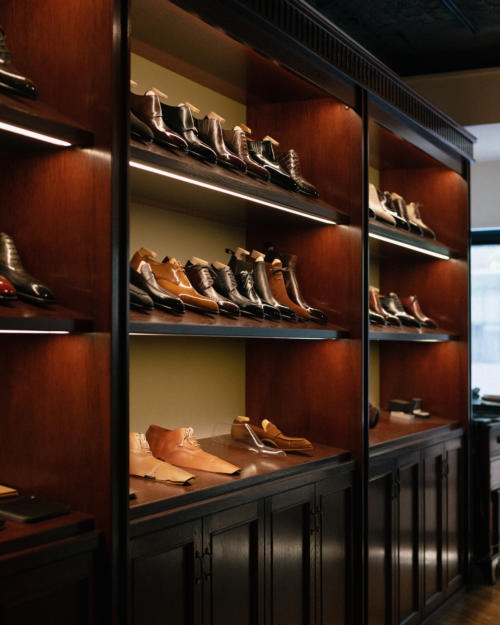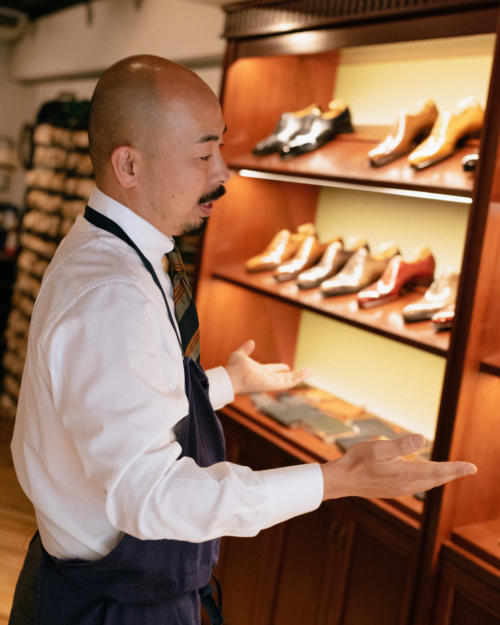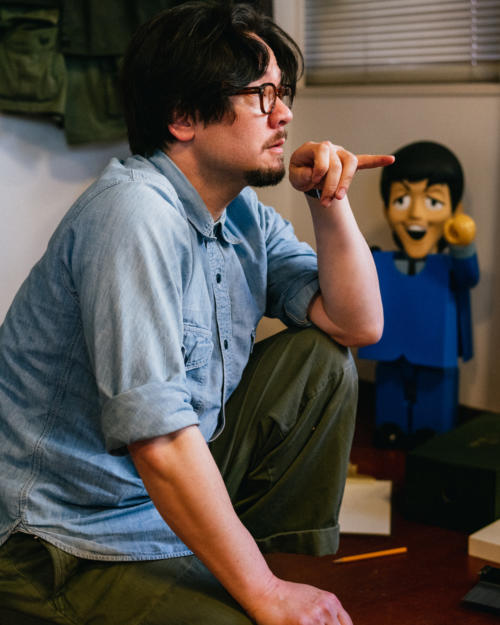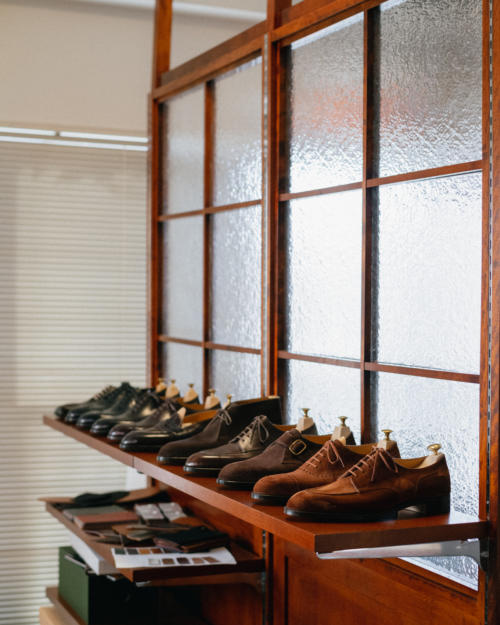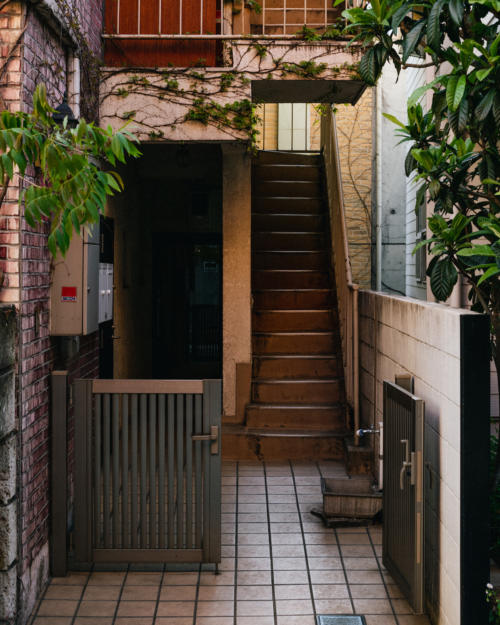5 – 6 years in the past, it was straightforward to seek out younger those who wished to be shoemakers in Japan. The wave of enthusiasm for each craft and menswear elsewhere on the earth had washed up right here simply as strongly.
At this time, with Covid having solely simply successfully ended (most foreigners had been solely allowed in late final yr), it’s loads more durable. “I do know numerous shoemakers are struggling,” says Yohei Fukuda, as we talked to him one morning throughout our current journey.
“There are numerous single craftsmen in Japan, with only one or two apprentices, and now they’re usually on their very own.” The result’s that lead instances are being stretched out: a shoemaker that used to have the ability to make 40 pairs a yr with some assist can now solely make 20, and so supply is taking twice as lengthy.
The largest shoemaking faculty in Tokyo, a part of the Guild of Crafts, had 5 academics and 50 or 60 college students at its top. It now has one and 5.
“It’s arduous for small makers when clients can’t come for fittings as effectively,” says Yohei (under), referring to the shortage of journey. “In the event that they’re smaller they don’t essentially have every other work to take up.”
“I believe fairly a couple of folks reassessed issues throughout Covid,” says shoemaker Seiji McCarthy, once we see him later. “They received nervous about their safety, their future, as did I.”
Gone are the times when college students might be anticipated to worn 10 hours a day, six days every week, on a small wage. Issues out of the blue received severe.
Seiji (under) is doing effectively – he’s about to maneuver to a brand new area, and Yohei’s operation is far greater (making about 300 pairs a yr) however it’s been robust for a lot of. One giant model mentioned that round half of the factories they use in Japan had closed throughout Covid – about 30 across the nation. One other smaller operation mentioned orders had been backed up by wherever from six months to a yr.
For shoemakers, it’s notably arduous in Japan as a result of there isn’t the community of outworkers that there’s within the UK: bespoke at this degree hasn’t been round lengthy sufficient, and extra makers love to do issues themselves.
That angle additionally means makers are unlikely to merge to kind greater, maybe extra strong organisations.
On the plus aspect, there was a bounce in orders since Covid restrictions began to finish. Yohei says he took fewer orders than regular throughout Covid, however took over 500 final yr, which even along with his constant workers will push out lead instances.
Curiously, an growing quantity are made-to-order, reasonably than bespoke. For Yohei’s sneakers, meaning sneakers in a typical dimension and final, however made in the identical means as bespoke aside from the only, which is sewn by machine reasonably than hand.
After we final visited Yohei, the MTO vary was fairly small, reflecting his want to maintain it centered. Now a buyer can choose from any of the 20 or so fashions on show within the workshop.
“It’s nonetheless not very massive, we don’t need to make it complicated,” he says. “However we’ve got three monk straps, three boots, three loafers – that form of dimension.”
Orders are tipping in the direction of MTO too. Throughout his current trunk reveals in Asia, extra clients had been ordering MTO from Yohei than bespoke. “I believe in Asia individuals are not used to the time required,” he says. “In England most individuals nonetheless order bespoke as a result of it’s a extra mature market.” Seiji too is seeing a giant uptick in distant MTO.
The ultimate a part of the equation is prices. Costs of supplies that had been going up anyway solely accelerated throughout Covid.
Leather-based – almost at all times from the UK or Europe – has gone up by round 30%; labour prices have gone up due to the shortage of youthful staff; and the yen is weak. That’s not an issue in case you’re travelling and charging in international foreign money, however it was while you had been pressured to remain in Japan.
Nonetheless, neither Yohei nor Seiji, or the assorted different folks we spoke to whereas in Japan, are pessimistic. It feels extra like a very robust wave rolling again, reasonably than the ocean emptying totally: “The demand remains to be there, regardless of folks sporting smarter sneakers much less, for instance,” says Yohei.
As somebody who was there close to the start of this wave, I really feel there are positives too. Lots of the makers I do know weren’t even working then, and positively numerous readers have come to grasp the craft of shoemaking in that point, simply as a lot as tailoring – in London as in Tokyo. It’s going to most likely be a couple of years earlier than we see how a lot of that has survived the upheaval of the pandemic.
There might be separate, devoted protection of each Yohei and Seiji in a while. Info on them about pricing, trunk reveals and so forth will all be crammed in then.

